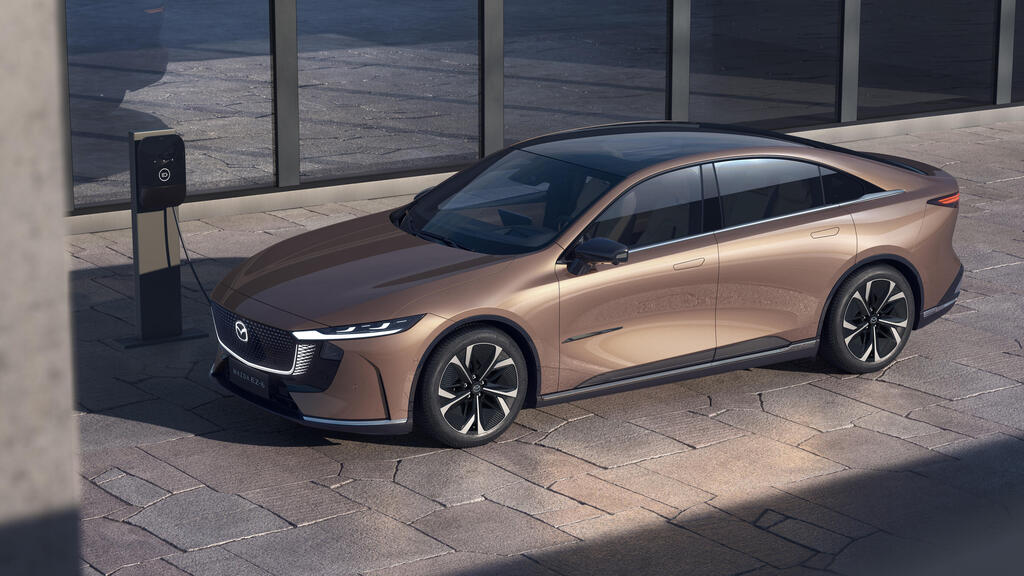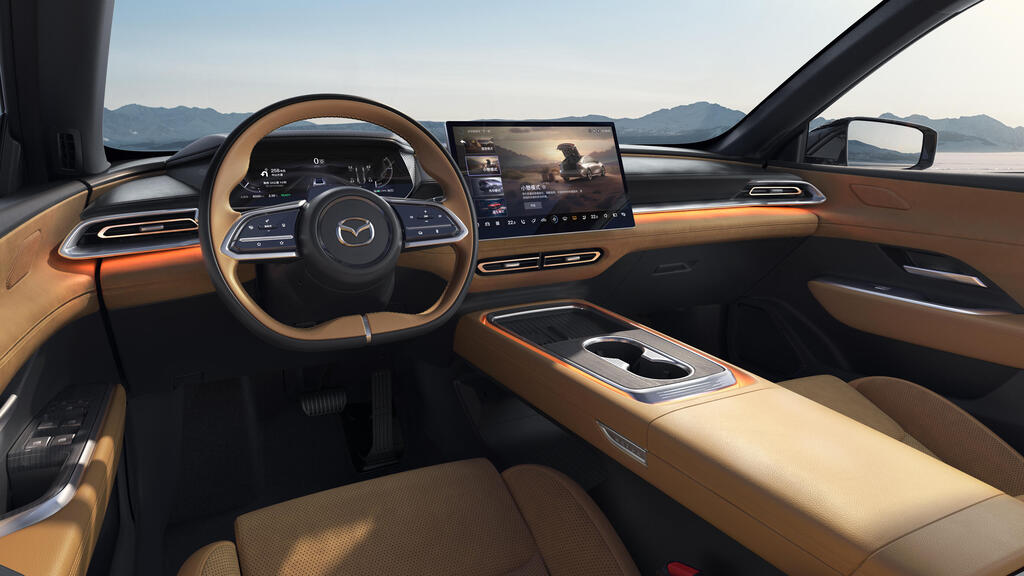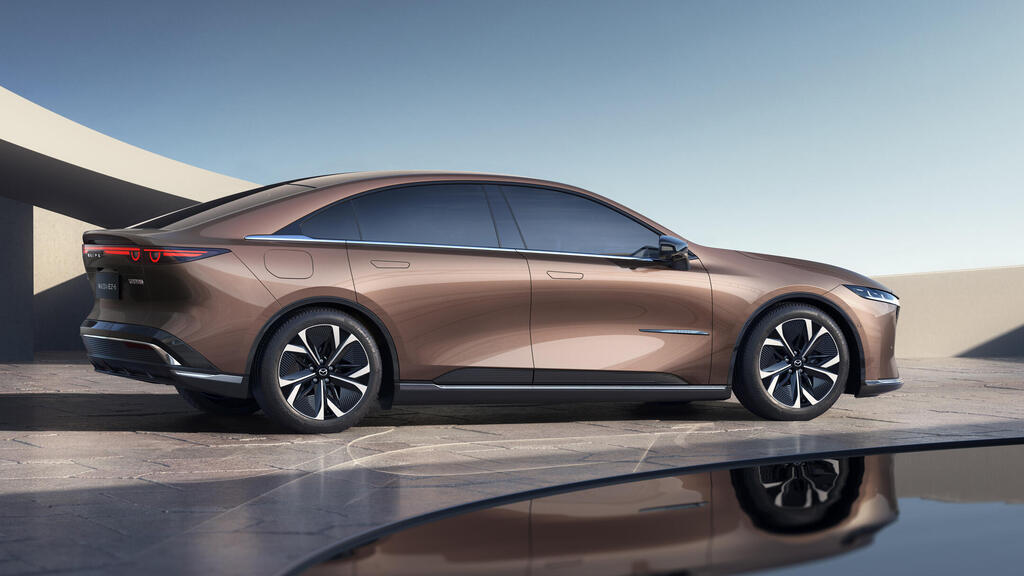Mazda has announced that a new, fully electric Mazda 6 model will soon be available in Europe and is expected to arrive in Israel sometime next year. The new model will replace the current Mazda 6, which has been on the market for 12 years without significant changes and will compete with rivals such as the Tesla Model 3, Hyundai Ioniq 6, BYD Seal, Xpeng P7, and Volkswagen ID.7.
The new Mazda 6, recently unveiled at the Beijing Automotive Exhibition, was developed and manufactured in collaboration with Chinese automaker Changan, one of the local industry giants. It shares platform and drivetrain components with the Deepal SL03, Changan’s large electric sedan.
The platform (EPA1) is Changan’s dedicated electric or hybrid drivetrain architecture, designed for balanced weight distribution (50-50 front-to-rear). The model will be offered with two drivetrain options: one with 218 hp, a 58.9 kWh battery and a range of about 400 km; and another with 258 hp, a 66.8 kWh battery and a range of about 480 km. Both versions feature rear-wheel drive.
The new Mazda 6 is available with a smaller battery and a 1.5-liter gasoline engine serving as a range extender in China, but it’s unclear whether this version will be sold in Europe as well.
The model’s exterior design combines Mazda's familiar front end with a large grille, narrow headlights, and a long hood. The profile resembles a four-door coupe with retractable door handles, frameless windows, a sharply sloping rear windshield and an electric rear spoiler on the trunk lid.
The driver's area includes a large touchscreen (14.6 inches) with minimal buttons, a digital instrument panel (10.25 inches) and a two-spoke steering wheel with a gear selector stationed nearby, freeing up space for storage compartments. The front passenger has an electrically retractable footrest.
Compared to the previous Mazda 6, the new model is 5 cm longer (492 cm) with a 7 cm longer wheelbase (290 cm), potentially offering significantly more passenger space.
Like other small Japanese manufacturers, Mazda struggles with the industry's transition to electric drivetrains due to the massive resources required for development and production, leading to its partnership with Changan.
Will this collaboration between the Japanese and Chinese companies allow them to compete in a segment crowded with top-quality competitors from around the world? Only time will tell.




